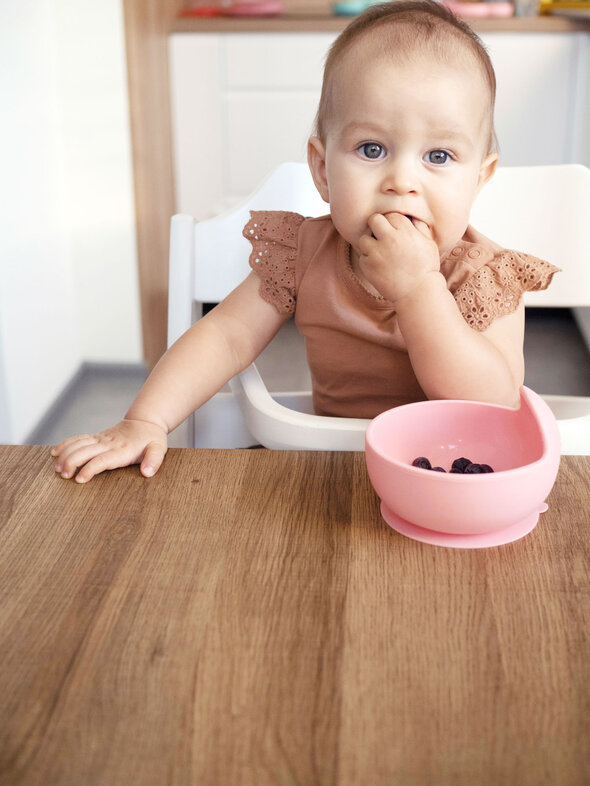

More and more parents decide to introduce the BLW method to expand their baby's diet. What is this method? What are its advantages and disadvantages? Let us address these questions below.
Expanding baby's diet is a new challenge for both the baby and the parents. There are many beliefs about how a child should eat and many methods we can choose from when expanding the diet. One of the available proposals is the BLW (Baby Led Weaning) method. Let’s discover its advantages and disadvantages.
Expanding baby's diet using the BLW method involves giving the child solid food and skipping the phase of eating mash. The second equally important assumption is to allow the child to eat independently, without the help of the parent. The child takes pieces of food from a plate or tray of a feeding chair.
For some parents, the BLW method may be a challenge because it limits the parent's control to some extent, such as how quickly the child will eat, how much it will eat, how the baby will eat, or how messy the child will be. It is based on trust in the child and its choices, because the baby decides how much it will eat and sets its own pace. The parent should decide when it is time to eat and what is on the plate, while the rest is up to the child. This is one of the baby's first steps towards independence.
Discover our new collection of silicone dishes and cups with weighted straw>>
1. The BLW method, which has recently gained popularity, offers many benefits. First of all, it teaches the child complete basics, i.e. chewing, biting off pieces and swallowing solid food. Its advantage is also the acquisition of the previously mentioned independence and self-confidence.
2. Expanding the diet using the BLW method gives the baby the opportunity to explore the texture of food, its smells, colors and, of course, tastes, and thus experience it using all the senses. The child enjoys eating because it eats at its own pace and on its own terms, which the baby associates with fun. Eating is a positive experience for the baby, which reduces the likelihood of being a picky eater later.
3. The BLW method allows the child to eat as much as it needs, which also helps the child control its appetite and build a proper relationship with food.
Check out what beautiful colors we offer our dishes for expanding the baby’s diet>>
4. Expanding the diet using the BLW method also allows the whole family to eat a meal together, which strengthens the sense of closeness. Another advantage is that it is easier to control what is on the child's plate, compared to feeding the baby, for example, ready-made jars, which often have an additional portion of sugar or salt. It is unnecessary in the first year of life.
1. The BLW method, just like any other method, has its advantages and disadvantages. With BLW, the child has the choice of what to eat from the plate. This has its pros and cons. The child learns independence. On the other hand, such a choice limits the parent's ability to properly compose a diet, because the toddler will not always reach for everything that is prepared for him. At a later stage, when milk is no longer a staple diet, it can lead to vitamin and mineral deficiencies.
2. Expanding your baby's diet using the BLW method requires a lot of patience. The pace of eating depends on the child and, therefore, eating combined with play may take longer at times. Moreover, not every child has the opportunity to start eating solid foods right away. Sometimes, despite everything, the choice of mash will be more beneficial for the child.
Discover the new collection of DOTS silicone dishes>>
3. The disadvantage of the BLW method is a higher risk of choking, which is why some parents will feel very insecure when watching their child learning to eat. This may cause stress, which is easily felt by children. In this case, the child may have negative associations with food. Perhaps then, as part of getting used to it, it is worth starting with the pulp.
4. Expanding the baby's diet using the BLW method means a lot of mess in the kitchen, which appears when the baby tries to eat on its own.